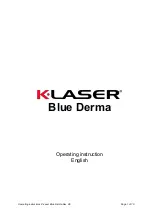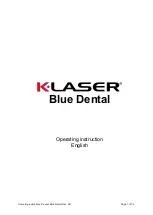
5
• Infection
• Loss of renal function
• Pain/discomfort
• Perforation of kidney, renal pelvis, ureter and /or bladder
• Peritonitis
• Pyuria
• Stent degradation/fracture
• Stent dislodgement/migration
• Stent encrustation
• Tissue ingrowth
• Ureteral reflux
• Urinary symptoms (frequency, urgency, incontinence, dysuria, hematuria)
• Urinary tract tissue erosion
INSTRUCTIONS FOR USE
Illustrations
Note: Use with wire guide with 0.038” diameter.
Note: Traditional plastic stents drain through a finite number of side ports. Resonance
is designed with an infinite number of side ports
(the coils) whereby urine may pass through or over any of the coils.
Note: Stent may be utilized with either an antegrade or retrograde placement
technique. The figures shown (1 and 2) are for retrograde placement.
1. Over a previously placed wire guide, pass introduction catheter and sheath into
appropriate position utilizing fluoroscopic guidance or direct vision (Fig. 1).
2. With introduction catheter and sheath in proper position, remove introduction
catheter to allow passage of the stent (Fig. 1).
3. Use the pigtail straightener to introduce the stent to the sheath.
Note: Once stent is in the sheath pull the pigtail straightener away
from the hub.
4. Use the introduction catheter to advance the stent through the sheath (Fig. 2) until
the numbered marker corresponding to the stent length being deployed reaches the
hub on the sheath (Fig. 3). At this point the first pigtail will have fully deployed from
the sheath.
Note: The sheath tip is radiopaque to aid placement.
5. To prevent further deployment of the stent in the kidney hold the introduction
catheter in place and retract the sheath.
6. When the hub of the sheath aligns with the proximal ink mark on the introduction
catheter the second pigtail is about to deploy. At this point retract both the sheath
and introduction catheter completely. (Fig. 2)
7. The stent may be removed using conventional cystoscopic techniques utilizing
forceps or graspers. Note: Do not force components during removal or replacement.
Carefully remove the components if any resistance is encountered
Summary of Contents for Resonance Series
Page 2: ......
Page 7: ...7 RESONANCE Resonance Resonance HiWire 12...
Page 9: ...9 0 038 0 97 mm Resonance 1 2 1 1 2 1 3 4 2 3...
Page 10: ...10 5 6 2 7 Cook...
Page 35: ...35 RESONANCE Resonance Resonance Nitinol HiWire 12...
Page 37: ...37 0 038 0 97 mm Resonance 1 2 1 1 2 1 3 4 2...
Page 38: ...38 3 5 6 2 7 Cook...
Page 83: ...83 Fig 1 Fig 2 Fig 3...
Page 93: ......
Page 94: ......
Page 95: ......






































